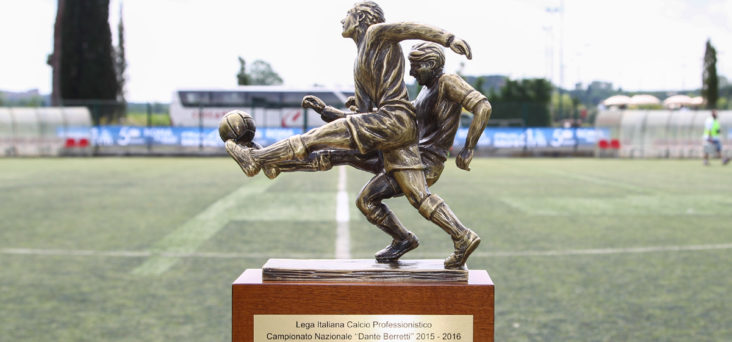Just under two years ago, I stood on the Curva Té of the Stadio Martelli in Mantua, to watch home side Mantova take on Pro Patria. It was my first time on a Curva and while not the most raucous I would go on to experience, it remained immensely enjoyable.
Sadly, the same could not be said for the fare that was served up on the pitch between two sides battling to avoid the drop into Serie D. To describe it as turgid would perhaps be overly kind. In the end, the match ended 1-1 (to this day, I still have no idea how both teams scored), which in the long run was enough for Mantova to keep Pro Patria at arm’s length for the remainder of the season.
Jump forward to the end of the 2016/17 season and Mantova are no more. For the second time in seven years, the club has succumb to shoddy finances. But while this is a sad state of affairs for those who hold the club close to their heart, it has become a startlingly regular occurrence for clubs in the third tier.
Along with Mantova, last summer alone has seen Latina (relegated from Serie B), Ancona, Como, Maceratese and Messina go out of business. Question marks have also been hanging over numerous other clubs in the division but for now they have done just enough to stave off the bogeyman. Serie C started the season consisting of three groups of 19 clubs rather than the expected 20. This being largely due to the fact that there are not enough financially secure clubs in Serie D to replace the ones above who have gone bankrupt, with only Triestina passing the mark.
However, clubs going out of business in Serie C is not a new phenomenon. Since the end of the 2014/15 season, the following clubs have joined those above in going bankrupt: Pavia, Rimini, Ischia, Martina Franca, Real Vicenza, Venezia, Monza, Grosseto, Barletta and Savoia. The disease has also begun to spread to higher levels of the game, with the bankruptcies of Parma, Virtus Lanciano and Varese.
In three seasons, some 19 professional clubs have gone out of business, basically a Serie A worth of clubs. If that wasn’t a frightening enough statistic, heres another startling fact that compounds this. The region of Italy known as Emilia-Romagna is split into nine separate provinces: Piacenza, Parma, Reggio Emilia, Modena, Bologna, Ferrara (Club is SPAL), Ravenna, Forli-Cesena and Rimini. Since 2005, seven of these nine provinces have seen their namesake club go out of business, the only ones to evade bankruptcy are Bologna, the Cesena part of Forli and Cesena.
Modena followed the trend and were forced to shut their doors only several weeks ago, dropping out of Serie C mid-season. Their group, Girone B, now contains only 18 sides. Luca Toni, a Modena native, is thought to be in talks about resurrecting the team. Under FIGC stipulations, they will have to begin again in Serie D, like Parma did in 2015. In recent years, Modena went from being the largest club in their province to third behind Sassuolo and Carpi, the latter also going bust within the last ten years.
With so many clubs going to the wall in a relatively short period of time, a legitimate question may now be asked as to whether Serie C is sustainable as a professional league. A knee-jerk reaction of turning the league into an amateur one may not be the answer, but a semi-professional/professional hybrid may be worth discussing.
Of course, there would be pitfalls to having such a league. Firstly, the competitiveness would no doubt take a hit. Yet take a look at the Conference division in England which runs on this type of model and in general, the gap in competitiveness between sides in that league is no more than what we already see between Lega Pro clubs.
Furthermore, a second downside of this type of model relates to the players themselves. Having finally achieved their lifelong dream of becoming a professional footballer, how many of these players would have the necessary qualifications to go out and find work in a specifically skilled environment should their clubs turn semi-professional?
Then again, if we take the case of Messina from last season where the players claimed to have gone unpaid for up to six-months. Can you really call yourself a professional if you’re not getting paid?
Perhaps a solution could be found in players dropping down to semi-pro level. This could allow them to acquire a day job, and then train maybe three or four nights a week, all while supporting their family and supplementing the notoriously fickle income that comes with lower league football.
I would like to stress at this point that this is just a proposition, and one that would need plenty of tweaking as there are certain problems associated with this model. For instance, in my native Ireland, the league is generally run on a semi-professional basis where the contracts handed out by the clubs may only cover the playing season, leaving the player unemployed for the remainder of the year.
Whatever the solution may be (answers on a postcard), it is plain to see that there is a sickness among the ranks of the third division. The sickness is so accepted that the division below, Serie D, has an in-built play-off system for the sole purpose of replacing bankrupt clubs. But as we have seen, 19 bankrupt clubs in three years is starting to prove untenable. Serie C is a great league full of fascinating characters, passionate fans and historic clubs, however, the task now is to find a solution to sustain those characters, increase attendances and stop historic clubs from becoming part of calcio’s past.

